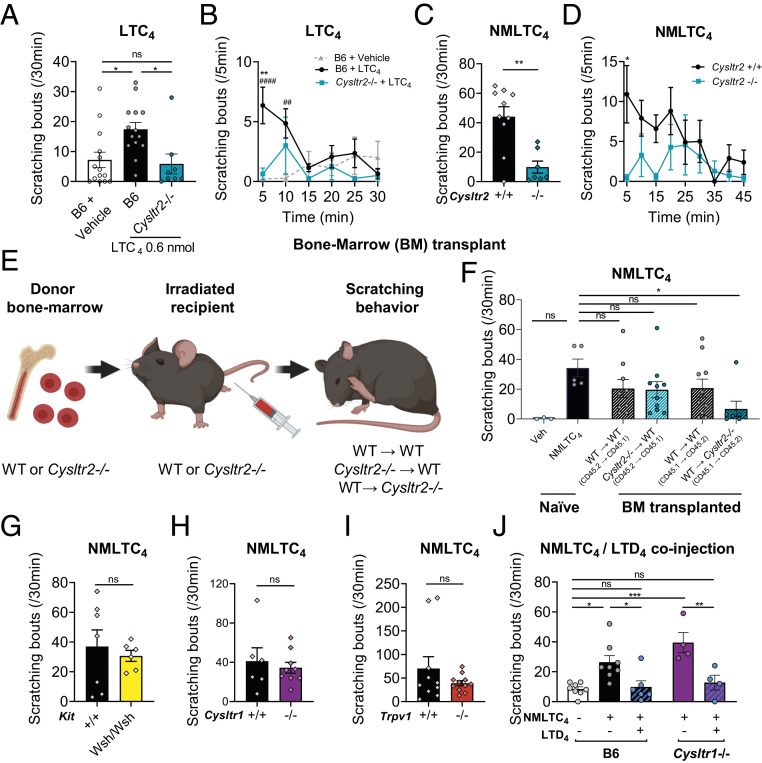Fig. 3.
LTC4-induced itch is dependent on CysLT2R. (A and B) Scratching bouts induced by intradermal cheek injection of vehicle or LTC4 0.6 nmol in B6 mice or by injection of LTC4 0.6 nmol in Cysltr2−/− mice (7 to 44 wk old; A) and detailed scratching bout kinetics over 30 min (#B6 + LTC4 vs. B6 + vehicle; *B6 + LTC4 vs. Cysltr2−/− + LTC4; B). (C and D) Scratching bouts induced by intradermal cheek injection in Cysltr2+/+ or Cysltr2−/− mice of NMLTC4 (0.6 nmol; C) and detailed scratching bout kinetics over 45 min (D). (E and F) Generation of BM chimeras with WT or Cysltr2−/− mice as donors and WT or Cysltr2−/− mice as recipients. (E) Diagram of BM transplant procedure. (F) Scratching bouts induced by intradermal cheek injection of NMLTC4 0.6 nmol in naïve mice and in BM chimera. Behavior recorded in daylight settings (not in iBOB). (G–I) Scratching bouts induced by intradermal cheek injection of NMLTC4 (0.6 nmol) in (G) KitWsh/Wsh mice, (H) Cysltr1−/− mice, and (I) Trpv1−/− mice. (J) Scratching bouts induced by the coinjection of NMLTC4 (0.6 nmol) and LTD4 (2 nmol) in B6 mice and in Cysltr1−/− mice. Values presented as mean ± SEM. Unpaired t test (C, G, and I), repeated-measures two-way ANOVA with Šidák’s posttest (B and D), one-way ANOVA with Dunnett’s posttest (F), and one-way ANOVA with Tukey’s posttest (A and J). ns, nonsignificant (*P < 0.05; **P < 0.01; ***P < 0.001).

